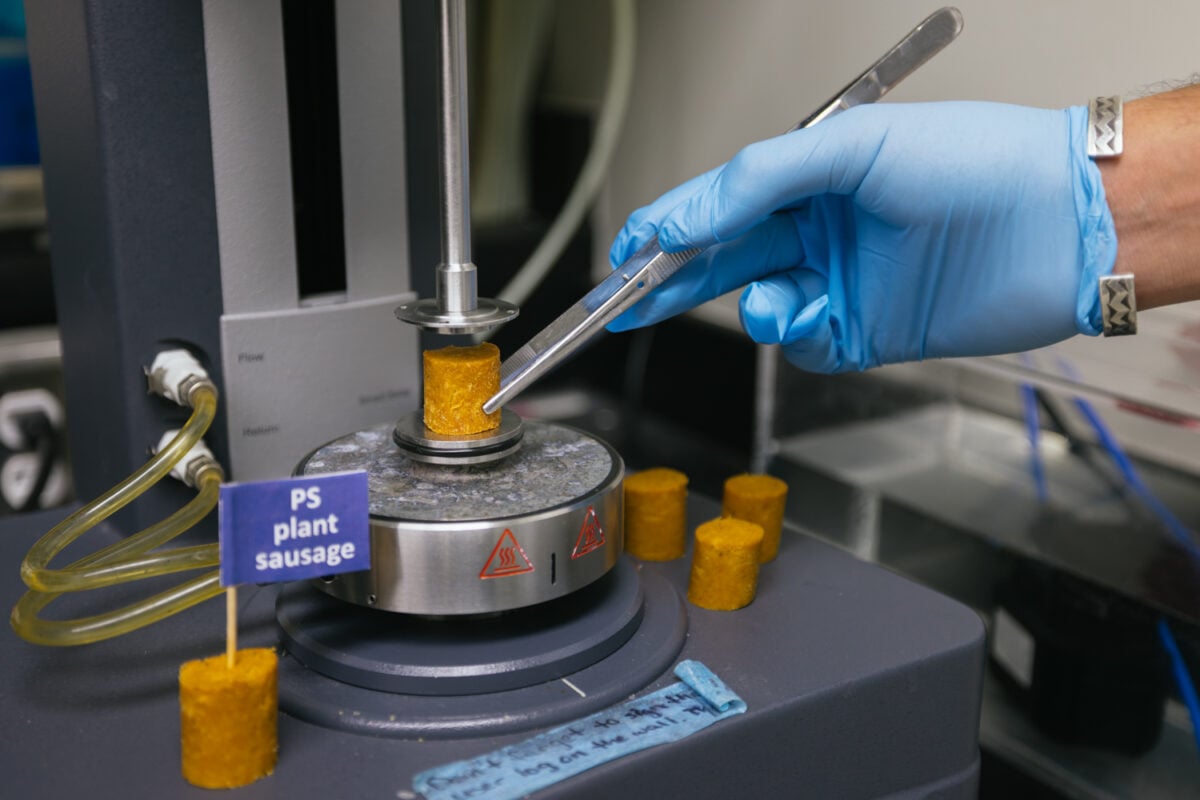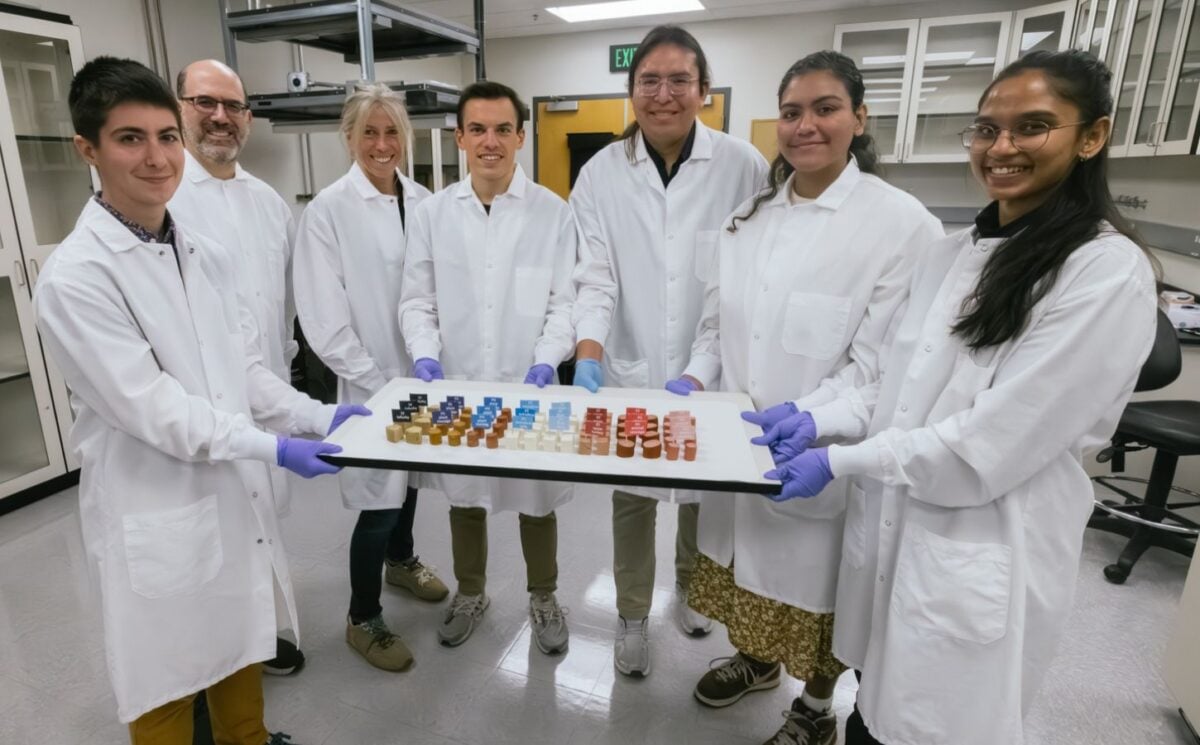Researchers at Stanford University are joining their mechanical testing with artificial intelligence technology in a bid to take plant-based meat alternatives to the next level of realism. The team is aiming to bridge the gap by closely analyzing the texture of meat products and using one of the most scientific approaches yet seen to mimic the tastes and textures of meat using plants.
Read more: Are We Entering A ‘New Era’ Of Meat Alternatives?
The Stanford engineers have set about comparing the mechanical properties of a number of meat products, with the goal of identifying key areas where meat alternatives can have taste and texture improved upon. An example finding is that plant-based sausages and hot dogs have done well to mimic their meat counterparts, whereas vegan turkey alternatives need more work.
The method sees the group using a three-dimensional mechanical test that measures the texture of meat and vegan food samples. The foods undergo stresses including pushing, pulling, and shearing, to quantify the textures and properties.
Read more: Scientists Discover ‘Critical Link’ Between Red Meat And Colorectal Cancer Risk
Plant-based meat and machine learning

A critical part of the research project is to utilize machine learning techniques for data processing from the tests. This AI technology enables the team of scientists to go deeper in identifying patterns in the foods’ properties and how this affects taste and texture. “Instead of using a trial-and-error approach to improve the texture of plant-based meat, we could envision using generative artificial intelligence to scientifically generate recipes for plant-based meat products with precisely desired properties,” the authors wrote.
The researchers believe this new approach will speed up the creation of plant-based meat products that will set a new precedent for textures and flavors that are the closest to animal products yet. The Stanford scientists intend to share the workings, methodology, and data with the scientific community at large in the name of food science and collaboration.






